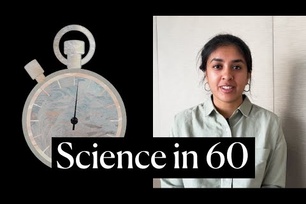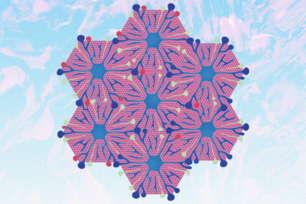- About
- Research
- People
- News
Making a model
Written by
This story is part of our series, Tool and Method Development at Whitehead Institute. Click here to see all stories in this collection.

Some of the most important tools in researchers’ toolkits are the model organisms they use to study biological questions. While some organisms have wings and others have tails, all species share a common ancestry and much of the same DNA. Because of this, researchers can often study a biological process in one species to learn about how that process may work in related species. Using model organisms, rather than studying biology in each species individually, allows biologists to ask their questions in organisms with traits that are amenable to research, such as a short generation time, easy-to-manipulate genetics, and the ability to grow and propagate in the lab.
How do researchers decide which species, out of the millions that exist, to develop as models? Whitehead Institute researchers have had a hand in establishing and promoting the use of several model organisms over the years. Click through this slideshow to learn what drew them to those species and how they helped shape them into powerful models to study fundamental biological questions.
Top left: Rebecca Povilus/ Whitehead Institute, top right: Kathleen Mazza-Curll/Mansi Srivastava/Whitehead Institute, bottom right: "Arabidopsis thaliana 2019-04-27 2246" by Salicyna is licensed under CC BY-SA 4.0, bottom left: Gerald Fink/ Whitehead Institute

Baker’s yeast (Saccharomyces cerevisiae) grows everywhere around us. This tiny powerhouse has long been a diet staple in both bread and beer and over the past half-century it has also become a staple in biological research. However, when Whitehead Institute Founding Member and former Director Gerald Fink started working with baker’s yeast as a graduate student in the 1960s, he was told that it was a difficult organism to manipulate and was warned against it.
Nevertheless, Fink stuck with yeast and helped turn it into one of the premier model organisms in biology. One of his key contributions was figuring out how to insert any gene, from any organism, into yeast cells. This lets researchers study genetics in yeast, and enables yeast to be used as a biological factory. If researchers or companies know the genes that produce a desired molecule, they can insert those genes into yeast, and the yeast will start pumping out that molecule. Thanks to this innovation, yeast has been used to mass produce many vaccines, such as for hepatitis B, and medicines—perhaps most famously, insulin—as well as biofuels and other products.
Gerald Fink/ Whitehead Institute

Yeast is a go-to model to discover key insights into the biology of most life on Earth because it has fundamental machinery common to all species whose cells contain a nucleus, which includes all animals and plants. It is readily available, easy to maintain in the lab, and now, with the tools that Fink and others have developed, it is widely used in research labs throughout the world. Work in yeast has helped shape our understanding of the cell division cycle and gene regulation. It is often the first organism researchers use to study diseases, test out potential medicines, and engineer biofuels. As researchers develop new tools and approaches for research in yeast, the possibilities—like freshly kneaded dough—continue to rise.
"Saccharomyces cerevisiae, SEM image" by Mogana Das Murtey and Patchamuthu Ramasamy is licensed under CC BY-SA 3.0.

Mouse-ear cress or Arabidopsis (Arabidopsis thaliana), a small flowering plant, is typically considered a weed when found in the wild. Yet, in research institutes around the world, researchers are cultivating Arabidopsis by the trayful. The plant is not much to look at in a garden, but it does not take up much space, is simple to grow, reproduces quickly, and has a small and easy-to-manipulate genome. In other words, it’s an ideal model organism, and so it has become a go-to model for plant research.
Whitehead Institute Founding Member and former Director Gerald Fink, whose work was instrumental in making baker’s yeast a premier model organism, also helped to cement Arabidopsis as a model. Fink supported Arabidopsis’ promotion to the rank of model organisms; he wrote a piece in the journal Genetics in 1998 stating as much, in which he also explained the factors that made the plant such a successful system. Around the same time, Fink figured out how to engineer Arabidopsis to become more tolerant of salt and drought. This research could be applied to help protect crop plants, like wheat and rice, from the effects of climate change, such as more frequent droughts and seawater incursions into fields.
"Arabidopsis thaliana 2019-04-27 2246" by Salicyna is licensed under CC BY-SA 4.0.

Arabidopsis is still plentiful in the Whitehead Institute greenhouse today. Whitehead Institute Members and plant biologists Mary Gehring and Jing-Ke Weng both use it. Gehring, in particular, does much of her research in Arabidopsis. Her lab uses the plants to investigate epigenetics, which is the study of heritable changes, often caused by chemical tags on the DNA, that affect how genes are expressed. Epigenetic markers can modulate whether genes are turned off or on and how strongly the genes are active. Plants including Arabidopsis use epigenetic mechanisms to control everything from seed size to the time it takes to reach maturity – traits that are important in our staple food crops.
Conor Gearin/ Whitehead Institute

The three-banded panther worm (Hofstenia miamia) is an unassuming creature with a small, simple sausage-shaped body, but its biology may contain key insights into wound healing and regeneration. The species is able to regenerate any part of its body: cut off its head and the head will grow a new body, while the old body grows a new head. Whitehead Institute Member Peter Reddien and Mansi Srivastava, then a postdoc in his lab and now a professor at Harvard University, introduced the species as a model for regeneration research after they collected specimens from a pond in Bermuda. The researchers found three-banded panther worms to be a robust model for regeneration. Reddien relies on them, and Srivastava now uses them as the primary model organism in her lab. The insights that researchers gain into how these animals heal could lead to advances in the field of regenerative medicine.
Kathleen Mazza-Curll/Mansi Srivastava/Whitehead Institute

Reddien studies regeneration primarily in another species, the planarian (Schmidtea mediterranea), a small flatworm that has the same incredible regenerative capabilities as the three-banded panther worm and, on the surface, looks quite similar to it (in the images above, the planarian is to the right). But though the species may resemble each other, they are actually only very distantly related: their last common ancestor lived about 550 million years ago. Scientists often compare the biology of such distantly related species. The things they have in common have likely been conserved across time and through speciation events, and so may provide insight into the biology of other species with the same common ancestor. Reddien and Srivastava found that planarians and three-banded panther worms rely on some of the same signaling pathways to control regeneration, which suggests that their common ancestor--which is also the ancestor of most animals--may have used the same pathways. Later work from Reddien and then-postdoc Amelie Raz confirmed another similarity: the panther worms, like planarians, rely on muscle tissue to send the signals that help guide regeneration. The fact that three-banded panther worms diverged from most other animals so long ago makes them a particularly potent tool for understanding the evolution of regeneration and related biological processes.
Left: Kathleen Mazza-Curll/Mansi Srivastava/Whitehead Institute; Right: Peter Reddien/Whitehead Institute
Flowering plants are a cornerstone of our ecosystems and our diets, yet mysteries remain about how they evolved and quickly became the dominant plant species. Arabidopsis can help to answer many of those questions, but not all of them. Rebecca Povilus, a postdoctoral researcher in Whitehead Institute Member Mary Gehring’s lab, wanted to explore the biology of a species that branched out from the flowering plant family tree early on, and has evolved separately since, to gain insights into how reproductive traits in flowering plants have evolved across species with distinct histories over time. The water lilies, a group that split from the other flowering plants long ago, seemed like a good group to study, but most water lilies are too large and they grow and reproduce too slowly to be suitable for use in the lab.
However, Povilus was in luck. As a graduate student, she came across Nymphaea thermarum (N. thermarum), a tiny water lily—possibly the world’s smallest—with quick generation time and a relatively small genome, both good traits for research. Povilus is now breeding N. thermarum at Whitehead Institute and using the specimens in her research, but this model-in-the-making almost disappeared before it reached biologists’ radar.
Rebecca Povilus/ Whitehead Institute

In this image of an N. thermarum seed, the embryo and surrounding endosperm are on the left in brown.
A German botanist, Eberhard Fischer, discovered the water lily species growing around a hot spring in Rwanda in the 1980s. No N. thermarum were found growing anywhere else, and by 2009 the species had become extinct in the wild. Fortunately, Fischer had collected specimens. After some trial and error, horticulturists like Carlos Magdalena at the Royal Botanic Gardens, Kew figured out how to get the specimens to grow and flower in captivity. Without their efforts, Povilus would not have found her perfect research subject.
Currently, Povilus is using the lilies to study how genes are regulated in a tissue called endosperm, which controls nutrient supply to the developing seed. Much of our diet consists of endosperm: the seeds of rice, corn, wheat, and other cereal crops mostly consist of endosperm, so building a better understanding of how this tissue develops may have important implications for new agricultural advancements. Looking ahead, Povilus hopes that N. thermarum will become a widely used research model.
Rebecca Povilus/ Whitehead Institute

Model organisms are essential for biological research. They come in many forms, from yeast to flowers to worms. But sometimes, when the researchers come up with a question that cannot be answered in these familiar species, or that could be better answered elsewhere, they must establish new models. Fortunately, the rich diversity of life that exists on Earth provides scientists with many species to pick from. So long as that diversity is protected, researchers will be able to find answers to important biological questions in the most unexpected of species. New model organisms can come from anywhere—a hot spring in Rwanda, a pool in Bermuda—but their inner workings reveal insights into the biology of species around the world.
Top left: Rebecca Povilus/ Whitehead Institute, top right: Kathleen Mazza-Curll/Mansi Srivastava/Whitehead Institute, bottom right: "Arabidopsis thaliana 2019-04-27 2246" by Salicyna is licensed under CC BY-SA 4.0, bottom left: Gerald Fink/ Whitehead Institute
Topics
Contact
Communications and Public Affairs
Phone: 617-452-4630
Email: newsroom@wi.mit.edu


